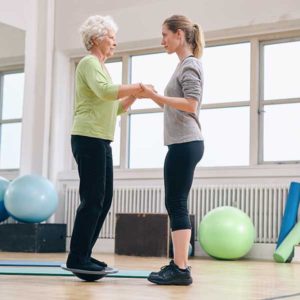With the beginning of the new year, exercise and getting fit are common topics/goals. While trying to lose weight and getting fit are important; exercise provides us with so much more than a smaller waist line. Exercise is beneficial for people of all ages and can play a vital role in our overall health. Today we will dig a little deeper into what research has found to be the more meaningful benefits of exercise for all age groups.
Ages 3 to 6 years:
Exercise can help improve the bone health and help with weight control.
Ages 6 to 17 years:
Exercise has been shown to improve cognitive function, bone health, and weight control. It can also improve cardiorespiratory and muscle function. Kids in this age group that exercise regularly also have fewer symptoms of depression.

Adults:
There is a long list of health benefits for adults who exercise regularly. We will break these down into categories.
- Cardiometabolic conditions
- Lower the risk of a cardiovascular event and lower the risk of mortality from such event
- Lower the risk of hypertension
- Lower the risk of Type 2 diabetes
- Cancer
- Exercise has been shown to lower the risk of bladder, breast, colon, esophagus, kidney, stomach, lung, and endometrium cancer
- Brain Function
- Reduces the risk of dementia
- Improves cognitive function
- Improves quality of sleep
- Reduces risk of depression
- Reduces feelings of anxiety and depression
Older Adults:
Exercise can reduce the risk of falls and fall-related injuries. It can also improve the overall physical function in older adults with or without frailty.
Individuals with Pre-Existing Medical Conditions:
Just as with adults, we are going to break this section into categories as the benefits of exercise for individuals with pre-existing medical conditions is extensive.
- Cancer
- Reduce the risk of cancer as well as reduce the risk of mortality from cancer
- Osteoarthritis
- Reduce pain
- Improve function and quality of life
- Hypertension
- Reduces the risk of increased blood pressure over time
- Reduces the risk of cardiovascular disease from progressing
- Type 2 Diabetes
- Reduces the risk of cardiovascular mortality
- Reduces progression of disease indicators, such as, blood pressure, body mass index, blood lipids, hemoglobin A1c
- Multiple Sclerosis
- Improve walking
- Improve physical fitness
- Dementia
- Improve cognition

4 Types of Exercise
- Endurance/Aerobic
Jogging, Running, Cardio (Treadmill, Elliptical, Stair Stepper, Recumbent/Stationary bike), Cycling, Dance Classes are all types of endurance and/or aerobic exercise.
- Strength
Weights, Pilates, Resistance bands are all examples of ways to improve strength.
- Balance
Yoga, Tai Chi, Dance are all examples of ways to improve balance.
- Flexibility
Stretching, Yoga, Pilates, and Tai Chi are all examples of how to improve flexibility throughout the body.

So now what? Taking that first step towards starting an exercise routine is the most difficult. With all the different exercise variations it can make it difficult to decide what to do. Start by finding an exercise routine that interests you. If it interests you, you will grow to love it and you will look forward to it. Finding joy in what you are doing is the key to being successful and consistent with your workouts.
**Benefits of Exercise for specific age groups is from the American College of Sports Medicine**







